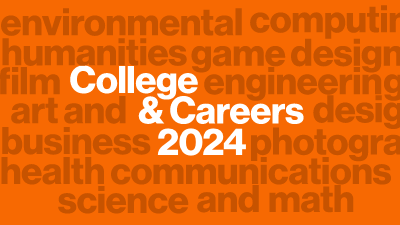Industrial Engineering Minor - Curriculum
Industrial Engineering Minor
| Course | |
|---|---|
| Prerequisites | |
| MATH-233 | Linear Systems and Differential Equations This is an introductory course in linear algebra and ordinary differential equations in which a scientific computing package is used to clarify mathematical concepts, visualize problems, and work with large systems. The course covers matrix algebra, the basic notions and techniques of ordinary differential equations with constant coefficients, and the physical situation in which they arise. (Prerequisites: MATH-172 or MATH-182 or MATH-182A and students in CHEM-BS or CHEM-BS/MS or ISEE-BS programs.) Lecture 4 (Spring). |
| Choose one of the following: | |
| ISEE-325 | Engineering Statistics and Design of Experiments This course covers statistics for use in engineering as well as the primary concepts of experimental design. The first portion of the course will cover: Point estimation; hypothesis testing and confidence intervals; one- and two-sample inference. The remainder of the class will be spent on concepts of design and analysis of experiments. Lectures and assignments will incorporate real-world science and engineering examples, including studies found in the literature. (Prerequisites: STAT-251 or MATH-251 or equivalent course.) Lecture 3 (Fall, Spring). |
| STAT-205 | Applied Statistics This course covers basic statistical concepts and techniques including descriptive statistics, probability, inference, and quality control. The statistical package Minitab will be used to reinforce these techniques. The focus of this course is on statistical applications and quality improvement in engineering. This course is intended for engineering programs and has a calculus prerequisite. Note: This course may not be taken for credit if credit is to be earned in STAT-145 or STAT-155 or MATH 252.. (Prerequisite: MATH-173 or MATH-182 or MATH-182A or equivalent course.) Lecture 3 (Fall, Spring). |
| STAT-257 | Statistical Inference Learn how data furthers understanding of science and engineering. This course covers basic statistical concepts, sampling theory, hypothesis testing, confidence intervals, point estimation, and simple linear regression. A statistical software package such as MINITAB will be used for data analysis and statistical applications. (Prerequisites: MATH-251.
NOTE: Students cannot receive credit for both MATH-252 and STAT-257 nor for both STAT-205 and STAT-257.) Lecture 3 (Fall, Spring). |
| Electives | |
| Choose five of the following: | |
| ISEE-301 | Operations Research An introduction to optimization through mathematical programming and stochastic modeling techniques. Course topics include linear programming, transportation and assignment algorithms, Markov Chain queuing and their application on problems in manufacturing, health care, financial systems, supply chain, and other engineering disciplines. Special attention is placed on sensitivity analysis and the need of optimization in decision-making. The course is delivered through lectures and a weekly laboratory where students learn to use state-of-the-art software packages for modeling large discrete optimization problems. (Prerequisites: MATH-233 or (MATH-231 and MATH-241) or equivalent course.) Lab 2, Lecture 3 (Spring). |
| ISEE-323 | Systems and Facilities Planning A basic course in quantitative models on layout, material handling, and warehousing. Topics include product/process analysis, flow of materials, material handling systems, warehousing and layout design. A computer-aided layout design package is used. (Corequisites: ISEE-301 or equivalent course.) Lab 2, Lecture 2 (Spring). |
| ISEE-330 | Ergonomics and Human Factors This course covers the physical and cognitive aspects of human performance to enable students to design work places, procedures, products and processes that are consistent with human capabilities and limitations. Principles of physical work and human anthropometry are studied to enable the student to systematically design work places, processes, and systems that are consistent with human capabilities and limitations. In addition, the human information processing capabilities are studied, which includes the human sensory, memory, attention and cognitive processes; display and control design principles; as well as human computer interface design. (Prerequisites: MECE-200 or equivalent course.
Co-requisites: ISEE-325 or STAT-257 or MATH-252 or equivalent course.) Lecture 4 (Spring). |
| ISEE-345 | Engineering Economy Time value of money, methods of comparing alternatives, depreciation and depletion, income tax consideration and capital budgeting. Cannot be used as a professional elective for ISE majors. Course provides a foundation for engineers to effectively analyze engineering projects with respect to financial considerations. Lecture 3 (Fall, Spring). |
| ISEE-420 | Production Planning/Scheduling A first course in mathematical modeling of production-inventory systems. Topics included: Inventory: Deterministic Models, Inventory: Stochastic Models, Push v. Pull Production Control Systems, Factory Physics, and Operations Scheduling. Modern aspects such as lean manufacturing are included in the context of the course. (Prerequisites: ISEE-301 and (STAT-251 or MATH-251) or equivalent course.) Lecture 3 (Fall). |
| ISEE-510 | Systems Simulation Simulation and queueing theory are used to design and evaluate the performance of dynamic and stochastic systems. Queueing methods are utilized to study waiting line systems. Digital simulation is applied to the design and analysis of complex systems in a variety of contexts using powerful simulation tools. The course will emphasize simulation modeling and statistical analysis techniques essential for conducting simulation projects. (Prerequisites: ISEE-200 and ISEE-301 or equivalent course.
Co-requisites: ISEE-325 or STAT-257 or MATH-252 or equivalent course.) Lecture 3 (Fall). |
| ISEE-560 | Applied Statistical Quality Control An applied approach to statistical quality control utilizing theoretical tools acquired in other math and statistics courses. Heavy emphasis on understanding and applying statistical analysis methods in real-world quality control situations in engineering. Topics include process capability analysis, acceptance sampling, hypothesis testing and control charts. Contemporary topics such as six-sigma are included within the context of the course. (This course is restricted to ISEE-BS or ISEE-MN or ENGMGT-MN students.
Co-requisites: ISEE-325 or STAT-257 or MATH-252 or equivalent course.) Lecture 3 (Fall). |
| ISEE-582 | Lean Six Sigma Fundamentals This course presents the philosophy and methods that enable participants to develop quality strategies and drive process improvements. The fundamental elements of Lean Six Sigma are covered along with many problem solving and statistical tools that are valuable in driving process improvements in a broad range of business environments and industries. Successful completion of this course is accompanied by “yellow belt” certification and provides a solid foundation for those who also wish to pursue a “green belt.” (Green belt certification requires completion of an approved project which is beyond the scope of this course). (Prerequisites: STAT-145 or STAT-205 or STAT-251 or MATH-251 or CHME-391 or equivalent course and at least 4th year standing.) Lecture 3 (Fall, Spring, Summer). |









